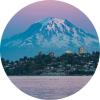If you’ve been dreaming about standing in a field of wildflowers at Mount Rainier National Park with a granola bar in one hand and your phone in the other, we’re going to stop you right there. We caught up with Terry Wildy, Chief of Education, Interpretation, and Volunteers at Mount Rainier National Park, to talk trail etiquette, safety, and how to prepare like a pro. Terry started her career as a National Park Service volunteer in 1997 and has since worked at eight parks, one regional office, and picked up a Master’s Degree in Resource Interpretation along the way. She’s passionate about preserving the park’s beauty and educating the next generation of park stewards, and now she’s here to coach all of us to be better, more conscientious hikers.
Whether you're planning your first hike or you've been casually stomping through meadows for years, this one’s for you.
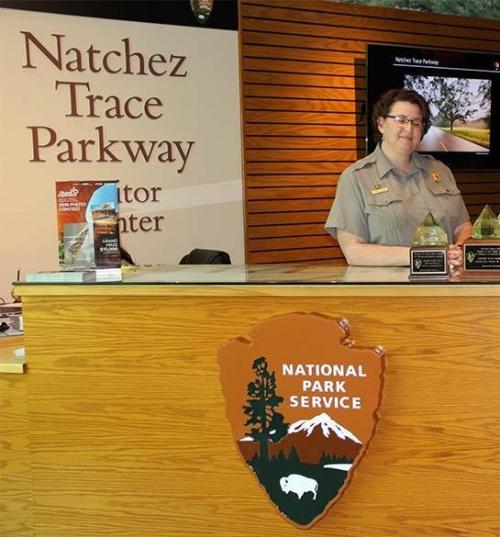
Terry Wildy, our guide and park veteran!
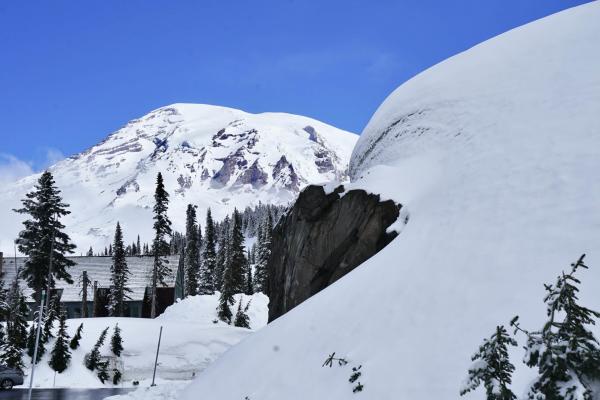
May visitors—are you prepared for snow?
Visit Tacoma—Pierce County: What’s one of the most common mistakes you see from park visitors?
Terry Wildy (TW): Some of the biggest problems for park visitors are caused by a lack of knowledge about the changes in weather from the bottom of the mountain to the high alpine landscapes of Paradise and Sunrise. In the lowlands surrounding the park this time of year, the weather warms and trees and flowers bloom, while places like Paradise remain in the grip of snow and ice into June. Folks arrive at Paradise in May, expecting to hike and see wildflowers, when melt-out doesn't occur until late June/early July. We want folks to have a great, safe experience in their public lands, so planning ahead and understanding what to expect when you arrive is a key factor.
Resources:
Check live webcams set up along the mountain’s most popular locations before you go
The park’s website provides alerts for trail conditions, weather updates, road closures, and more.
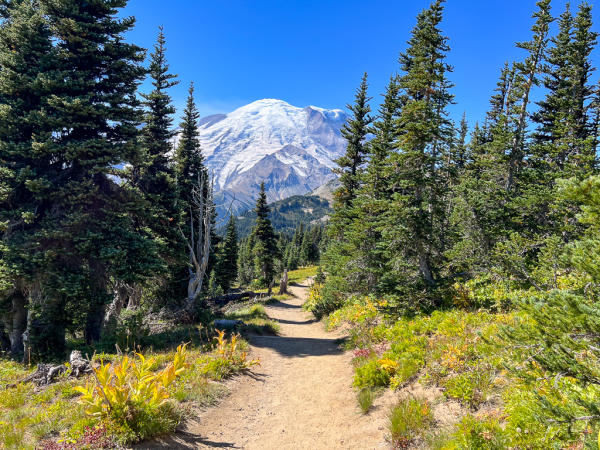
Sometimes footprints are even too much to leave; just one foot off the hiking trail can devastate important plants.
Visit Tacoma: Do hikers create environmental concerns at the park?
TW: Hikers going off established trails cause some of the most damaging, long-lived impacts. Stepping off trails and into the fragile alpine meadows may not seem like a big deal, but it is a huge problem. Wildflowers and other plants only have a few short snow-free weeks to grow, bloom, be pollinated, and produce seeds. Even one step off trail can kill plants and the cumulative impact of thousands of people doing the same along the busy trail system causes damage that can take decades to heal, if ever. We ask that all visitors are very careful to stay on established trails while they are out enjoying the park.
Drones are illegal in the park as well as being disruptive to park wildlife and visitors: the park is a no drone zone. Pets are not permitted on park trails. The PNW is a haven for dog lovers, and I have two myself. But they stay home and hold down the couch when I'm in the park. Even an adorable lap dog smells like a predator to native species. Dogs have also injured and killed park wildlife, dug up fragile vegetation, and disrupted other visitors' experiences. Dogs whose sole function is to provide comfort or emotional support do not qualify as service animals under the Americans with Disability Act (ADA) and are also not permitted on park trails. Please leave your dog at home!
Resource:
See more about guidelines and restrictions at the Laws & Policies page on the National Park Service website.
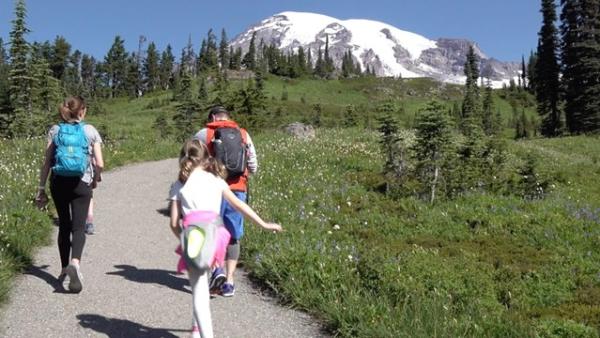
Leave No Trace is more than a bumper sticker. Here’s how to Wander thoughtfully.
Visit Tacoma: “Leave No Trace” is a phrase we hear a lot. Can you explain what it means for the average hiker?
TW: Leave No Trace principles consist of 7 guidelines that, when followed, minimize damage to our natural landscapes. They include:
-
Plan Ahead and Prepare
-
Travel and Camp on Durable Surfaces
-
Dispose of Waste Properly
-
Leave What You Find
-
Minimize Campfire Impacts
-
Respect Wildlife and
-
Be Considerate of Others
With over 1.5 million visitors to Mount Rainier National Park every year, it is important that we all do our part to minimize our impact on our shared public lands that we have all come to enjoy. Even if you are just coming to the park for a casual hike, taking photos and spending time with family and friends, you can do your part to leave the park in good shape for future visitors.
Resource:
Learn more about the seven Leave No Trace principles.
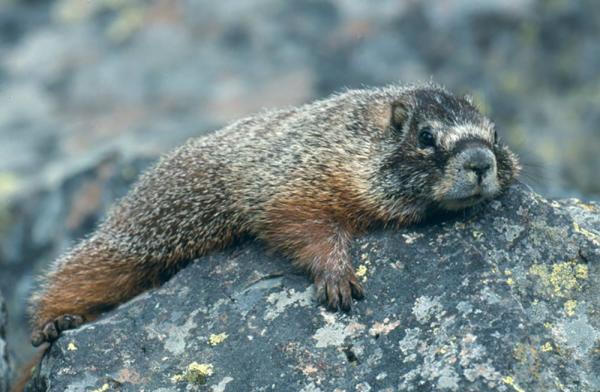
Don’t feed the wildlife, even if this guy tries to tell you differently.
Visit Tacoma: What should someone do if they encounter wildlife on the trail?
TW: It is always a thrill to see animals in their natural habitat. While it is very tempting to get closer to animals to get a photo, remember that these animals are wild, and visitors need to give them space. If you are impacting an animal's behavior in any way, you are too close. Don't ever feed wild animals. Human food can create illness or even kill animals, and animals that are used to people can become aggressive and will bite. You don't want to ruin your trip!
Resource:
Check out the full breakdown of animal-specific advice on the National Park Service website.
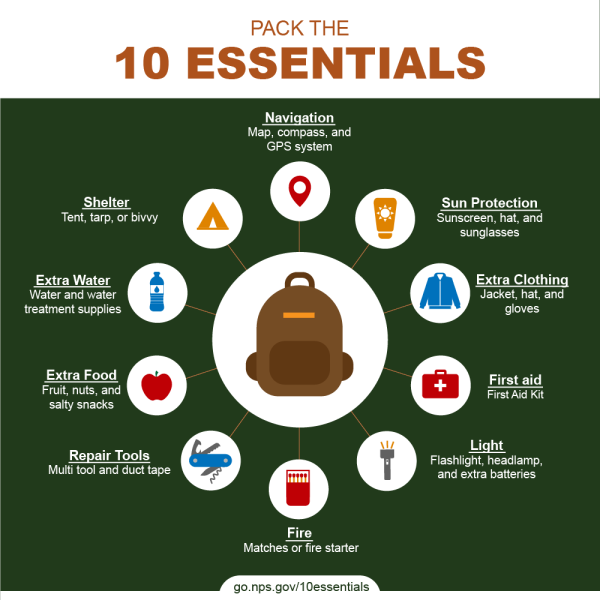
Locally-roasted small-batch coffee is surprisingly not included in the 10 essentials, but you can make it your honorary 11th if you wish.
Visit Tacoma: What safety precautions should hikers take before hitting the trail?
TW: Some of the most important safety precautions visitors should take include planning ahead and being prepared for the weather at the elevation you plan to visit. Look at the Mount Rainier National Park weather forecast and check the webcams before you leave. Carry a comfortable pack with the 10 essentials, and hike with a partner if possible. Always let somebody know where you are going and when you plan to return. Leave a note in your car about where you planned to go, and a description of what you are wearing in case you have an emergency and we need to go out and look for you. Millions of people enjoy the park every year without incident, but even the most experienced hiker can have an unlucky day. Twisted ankles and knees, and injuries from a fall are very common. Your cell phone won't have service in the park, so hiking with a friend helps protect both of you in the case of an emergency. You may have to wait hours or even overnight in bad weather for a rescue, so be prepared to be responsible for your own safety.
Resource:
Learn more about the 10 Essentials for hiking
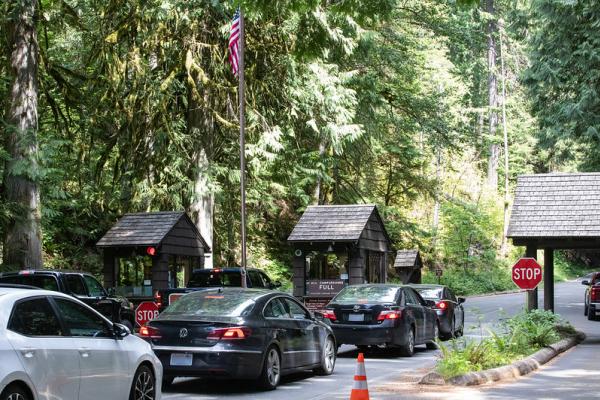
Don’t let unexpected announcements or being unprepared ruin your trip!
Visit Tacoma: What’s one thing you wish all hikers knew before coming to the park?
TW: Mount Rainier itself is a stratovolcano, and while a potential eruption would provide plenty of notice, fast-moving mudslides—called "lahars"—can roar downstream with virtually no notice. If you hear a roar and feel the ground shaking, move uphill away from rivers and streams as quickly as you can!
I also wish all people visiting the park knew to plan ahead. Check the weather for Mount Rainier National Park, and at minimum view the "Alerts" section on the park's webpage. The park has the best and most updated, accurate information. Sometimes there are trail closures, construction, road closures, or campfire bans that appear on short notice.
Finally, there is no reliable cell service in the park, so don't rent a vehicle that relies on cell service to activate! We have had many vehicles that folks rent and drive into the park, and then as soon as the vehicle is parked and turned off, it has no cell service to reactivate it, and it has to be towed away. It's a very sad experience for those folks since their trip is ruined, and we want everybody to have an enjoyable visit to the park.
Resource:
Download the free National Park Service App before you come to the park (there’s no service!) for trails maps, planning tools, and information with you on your hike. It’s good for more than 400 national parks, so why not?
Learn more about Lahars within the first minute of this fascinating YouTube video from USGS (United States Geological Survey).
Mount Rainier may be Instagrammable, but it’s not a theme park—it’s a living, breathing ecosystem that just so happens to be photogenic. With Terry’s tips in hand, you’ll be able to enjoy the park, take impressive nature photos, and avoid becoming a cautionary tale. “I admit to some bias,” says Terry, “but I think the park is ridiculously beautiful, and it is hard to take a bad picture. Just stay on the trails, please!”

